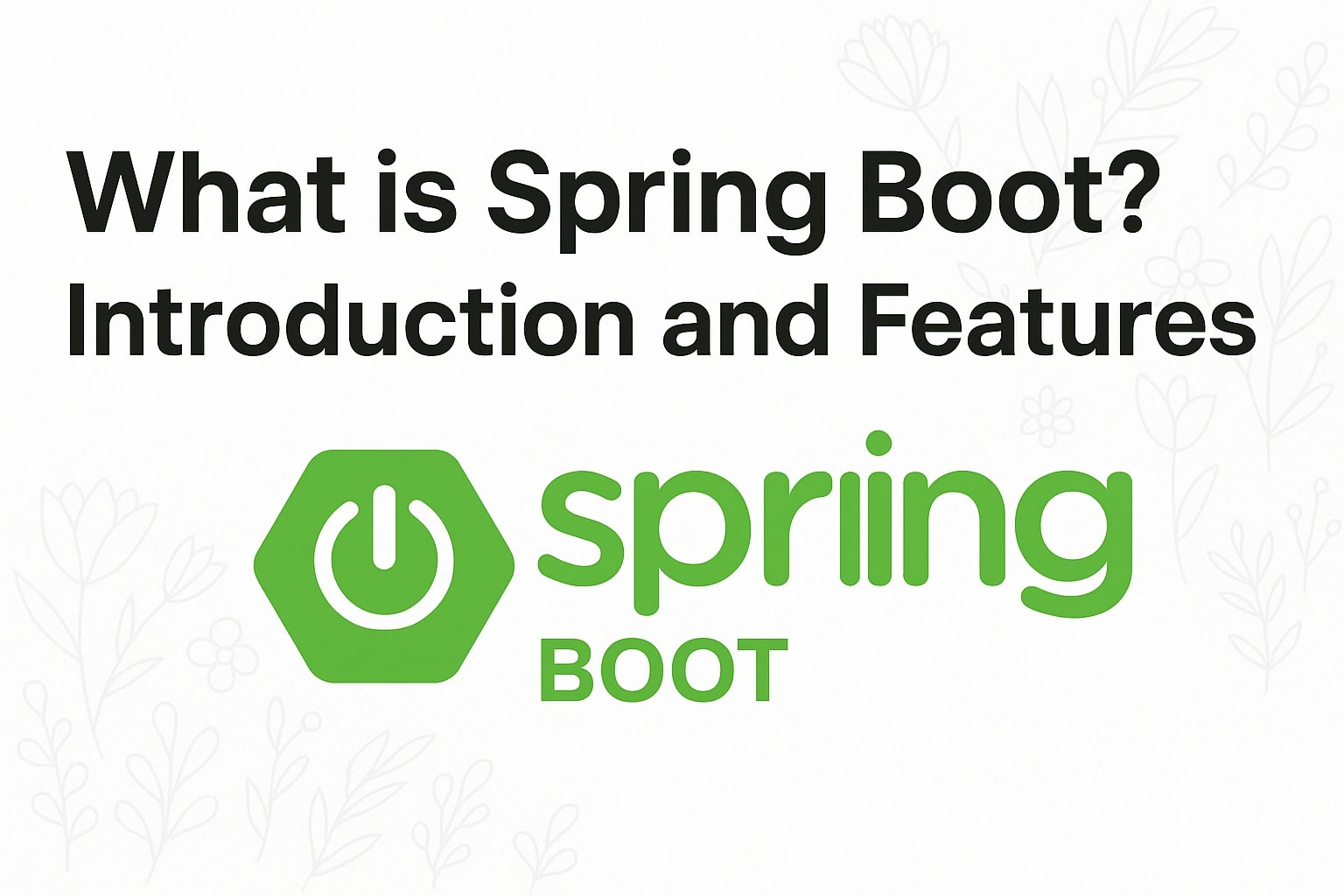Spring Boot is an open-source, Java-based framework that is part of the larger Spring ecosystem. It is designed to simplify the development of Spring applications by reducing boilerplate code, enabling auto-configuration, and supporting rapid application development.
🧠 Why Spring Boot?
Traditional Spring applications often required a lot of configuration. Spring Boot addresses these challenges by providing:
- Opinionated project structure and auto-configuration
- Embedded web servers like Tomcat, so no need to deploy WAR files
- Production-ready tools like Actuator, Metrics, and Health Checks
- Rapid development with minimal setup
🚀 Core Features of Spring Boot
1. Auto-Configuration
Spring Boot automatically configures beans based on classpath settings and environment properties. For example, if Spring MVC is on the classpath, a default MVC configuration is automatically applied.
2. Embedded Web Servers
You don’t need an external server to deploy your app. Spring Boot supports embedded servers like Tomcat and Jetty, which start with the application itself.
java -jar my-springboot-app.jar3. Starter Dependencies
Spring Boot provides pre-defined starter packages to simplify dependency management. For example, using spring-boot-starter-web adds all necessary dependencies for building web applications.
<dependency>
<groupId>org.springframework.boot</groupId>
<artifactId>spring-boot-starter-web</artifactId>
</dependency>4. Spring Boot CLI
The Spring Boot CLI allows you to run Spring applications written in Groovy from the command line. It’s great for scripting and quick prototyping.
spring run hello.groovy5. Spring Boot Actuator
Actuator provides production-ready features such as health checks, metrics, and application info, all exposed via REST endpoints.
curl http://localhost:8080/actuator/health6. Externalized Configuration
Spring Boot allows configuration via application.properties or application.yml, as well as environment variables, making it easy to manage across environments.
server:
port: 8081🧪 Hello World in Spring Boot
A basic Spring Boot application with a REST controller:
@SpringBootApplication
public class Application {
public static void main(String[] args) {
SpringApplication.run(Application.class, args);
}
}@RestController
public class HelloController {
@GetMapping("/hello")
public String hello() {
return "Hello, Spring Boot!";
}
}
Once started, access /hello at http://localhost:8080/hello to test the API.
🧾 Conclusion
Spring Boot removes the complexity of configuring Spring applications from scratch. It provides a quick way to get up and running, with defaults and tools designed for modern Java developers. Whether you’re building a monolith or microservices, Spring Boot is a solid foundation for your backend.
In the next article, we’ll walk through creating your first Spring Boot project using Spring Initializr and build a complete CRUD API.
